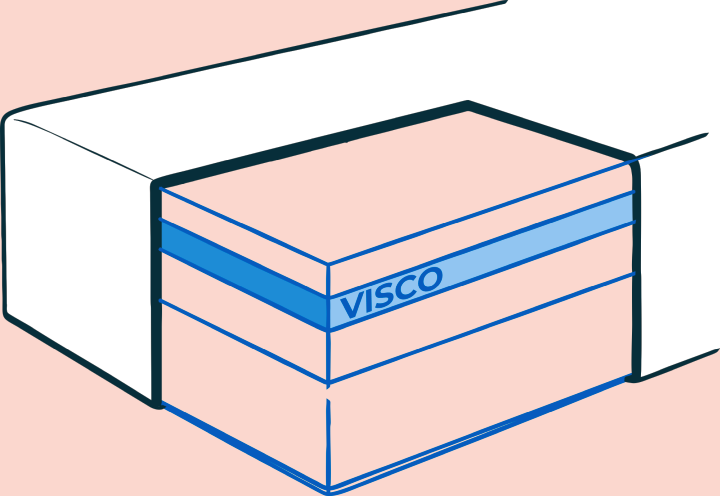To provide services at the highest level, we use cookies. Using the website requires you to choose settings related to their storage on your device. If you want to know what each type of cookie is used for, click the Details button below.
Thermoelastic foam? Only in the second layer of the mattress!28 kwietnia 2022 |

Thermoelastic foam is a type of polyurethane foam. As the only one of them, it is characterized by viscosity, which is why it is also called viscoelastic foam, as well as lazy foam. It is very sensitive to temperature and pressure, so it collapses under the human body.
Yes and no. Thermoelastic foam is healthy in that it does not contain dangerous ingredients. Like any polyurethane foam, it is a hostile environment for microorganisms, which makes it an anti-allergic product. However, the use of thermoelastic foam in the first layer of the mattress is not healthy for the spine, because it does not support it properly. In addition, it does not provide adequate support for the head, hips and limbs.
Yes and no. It is worth buying a mattress that has thermoelastic foam in the second layer. This gives the opportunity to eliminate the defects inherent in thermoelastic foam. However, it is not worth buying mattresses with thermoelastic foam in the first layer, because they do not provide adequate support for the body and spine, and additionally cause the effect of a mirror reflection of heat.
Yes. The thermoelastic foam warms you up during sleep because it causes the effect of a mirror reflection of heat. This type of polyurethane foam collapses under the influence of temperature and body pressure, which causes its cells to close. As a result, the thermoelastic foam becomes a thick layer of airtight polyurethane. Body heat is accumulated by it and released to the outside. Therefore, thermoelastic foam should not be used in the first layer of the mattress.
Yes. Both the density of the thermoelastic foam and its hardness are of key importance. It is worth noting, however, that - contrary to popular opinion - these are two completely different parameters. Density is given in kg/m3, and hardness in kPA or N (newtons). Therefore, when buying a mattress with a memory foam layer, you should always request both values.